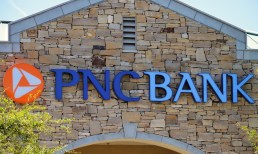Along the way, since 2008, blockchain has entered the stream of public consciousness. But, as noted in the first installment of this continuing series on the crypto economy, some vocabulary gets used interchangeably, and some confusion tends to result. There was a time when bitcoin was tied to blockchain, and blockchain was tied to bitcoin.
Now, we’re in an age when bitcoin is finding its way onto balance sheets at firms like MicroStrategy and Tesla (where you can buy their cars with bitcoin). PayPal and Square have been opening up their ecosystems to the buying and selling of bitcoin and its use within everyday commerce.
Along with bitcoin’s rise, other cryptos such as Litecoin — and even the joke coin, Dogecoin — have followed suit. Their market caps have expanded, as has their visibility (altcoins are simply alternatives to bitcoin, giving people and institutions a way to avoid putting everything on bitcoin while still having some skin in the crypto game).
Expanding And Evolving
But as crypto offerings have expanded and evolved, and as tokens have been tied to any number of use cases and specific functions, so, too, has blockchain – which is really the infrastructure that underpins the token flows themselves.
Advertisement: Scroll to Continue
Think of it this way: As the token economy takes shape to (ostensibly) offer something for everyone, the public ledgers that are part of the ecosystem have also become more specialized. Blockchains are now being deployed to create, issue and track a slew of other digital currencies, but also to make supply chains more efficient, or to help store and move different types of information. (Blockchains, in essence, are databases that chain “blocks” of data.)
Thus, from its origin as an immutable ledger of transactions, where bitcoin might have been the most visible use case, we’re finding that decentralization has its appeal across verticals and functions.
That’s especially important with the rise of security tokens (we previously discussed the difference between different types of tokens). Purpose-built blockchains serve those exchanges of tokens – or of smart contracts or enterprise functions – with what might be termed a goal to, say, make document flows across shipping lines more transparent, speedy and secure.
There’s room for building a business of building blockchains. In one example, last year, Ant Group said it launched AntChain (its productivity blockchain platform) that, in part, offers what is billed as an “all-in-one workstation that reduces the deployment time of the company’s blockchain-based solutions by as much as 90 percent.” Enterprise clients can thus utilize blockchain across a variety of settings.
And as noted in this space on Tuesday (May 4), 40 percent of respondents from technology companies around the globe have a blockchain development in the works. Roughly 90 percent of executives said blockchain will increase in importance in the coming years. The technology, overall, is expected to expand the global gross domestic product (GDP) by nearly $1.8 trillion in the next decade. In another nod toward blockchains built for specific purposes, the technology can be leveraged to smooth and strengthen the security of onboarding and ID verification within financial services.
Read More On Blockchain:



